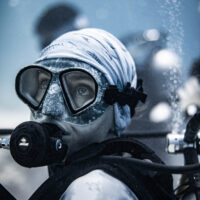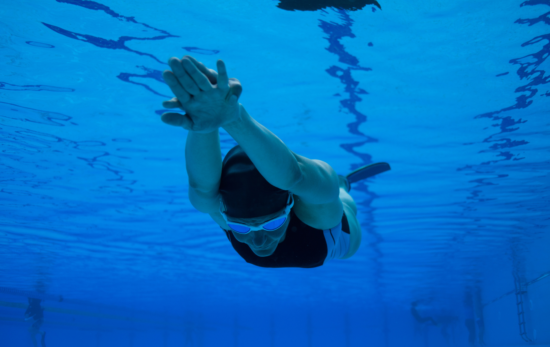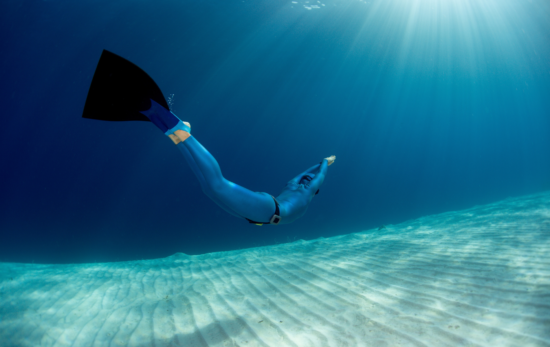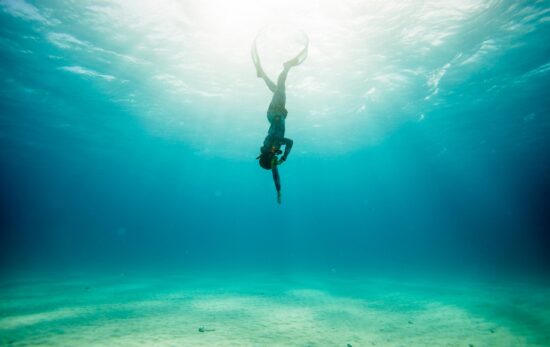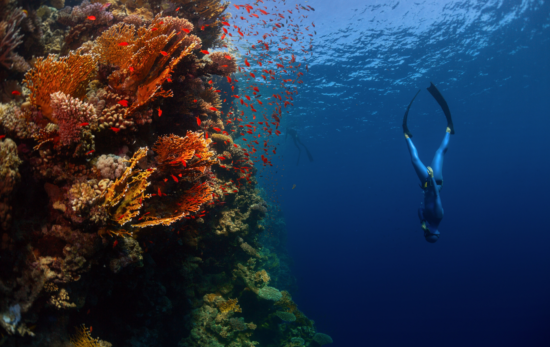Depth training in freediving is used to improve a freediver’s ability to safely and efficiently dive to greater depths while holding their breath. This type of training is done in open waterand is usually done alongside a weighted line that the diver can use to descend and ascend next to a swell as be tethered to using a safety lanyard.
The goal of depth training is to gradually increase the depth of the dive over time, while also improving the diver’s movement, and proper diving techniques, especially streamlining and equalization. Freedivers use a variety of techniques for depth, including but not limited to free immersion and constant weight freediving with or without fins.
During training, a diver will typically perform several dives to a set depth. The diver will also practice emergency procedures, such as black-out drills and buddy rescues.
It is important to note that depth training should only be attempted when safetied by a trained buddy or qualified instructor and to follow established safe freediving practices.
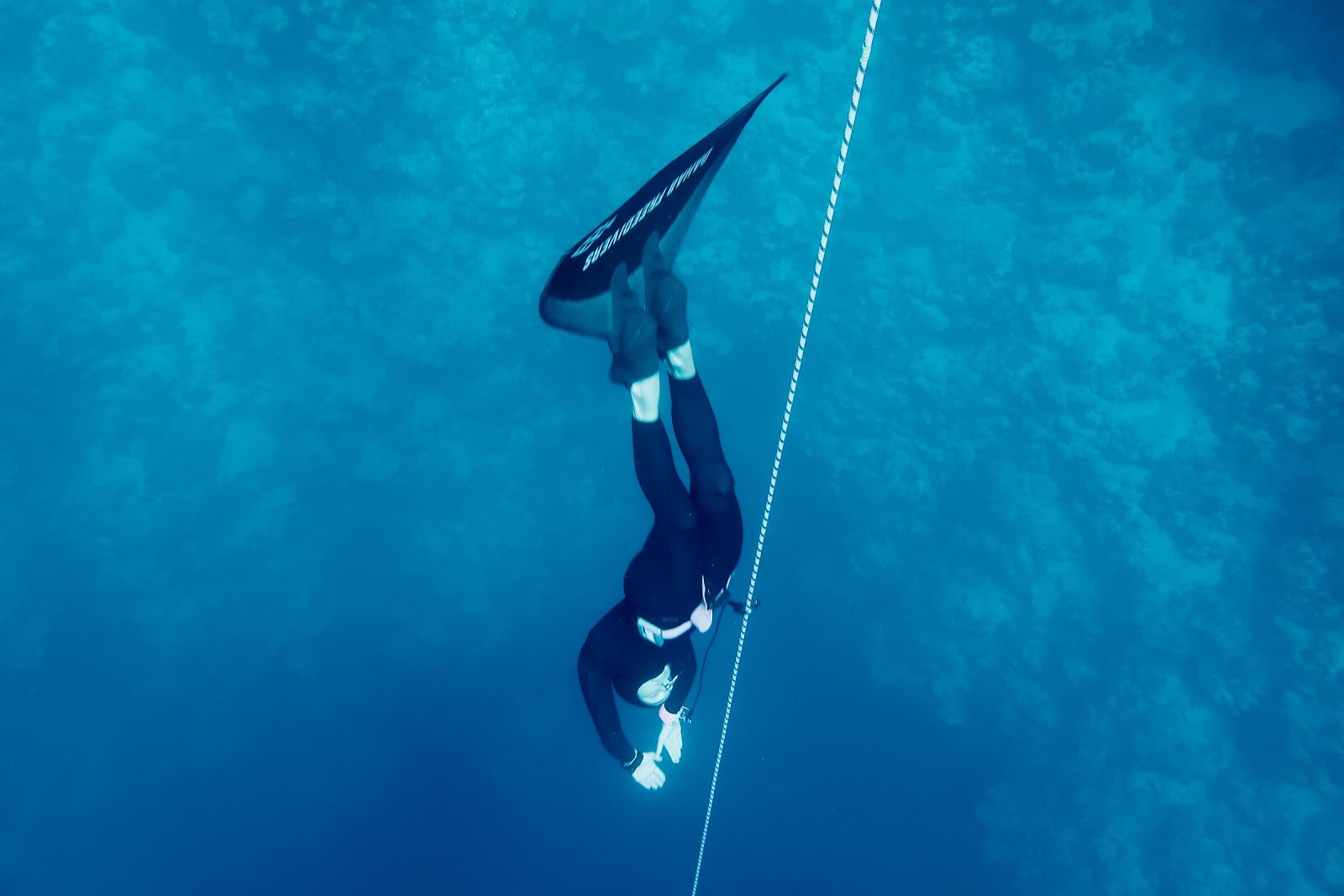
Depth Freediving Training Tips
Here are some tips for practicing and improving depth training in freediving:
- Start with shallower depths and gradually increase the depth over time.
- Practice diving in calm open water using a weighted line or a guide rope for descent and ascent.
- Practice proper diving techniques such as equalization, proper weighting and streamlined body position.
- Practice emergency procedures such as blackout drills and buddy rescue.
- Use a buddy or instructor to monitor your progress and to provide support.
- Practice regularly, and try to increase the depth of your dives gradually over time.
- Always perform recovery breaths immediately after surfacing.
- Incorporate relaxation and mindfulness techniques into your depth training to help you stay calm and focused.
- Always follow safety protocols and never push yourself beyond your limits.
- Take breaks and rest between sets and never overdo it.
- Be familiar with the dive site, conditions and the environment.
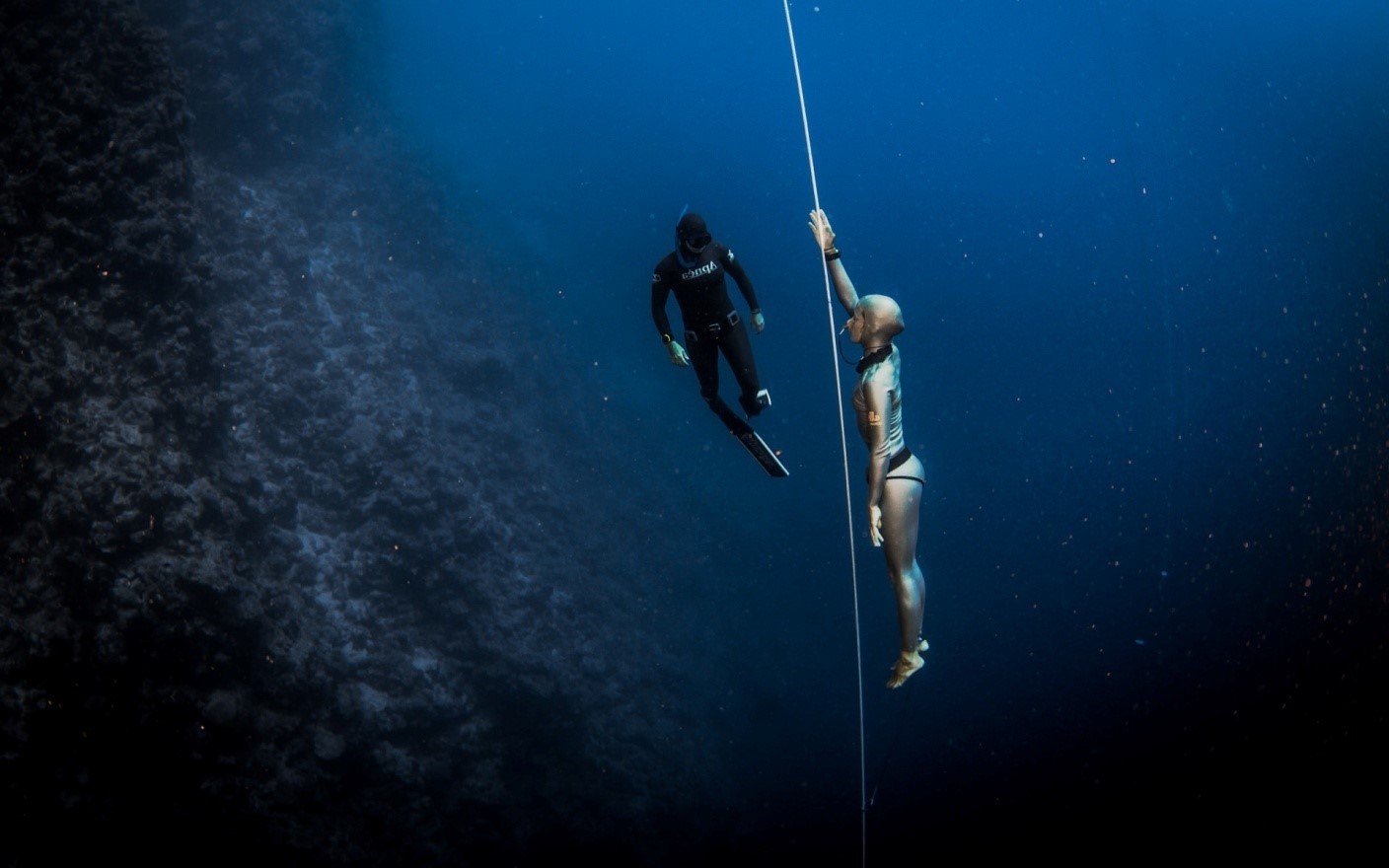
Potential Risks That Can Occur Without Proper Training
Freediving is a fun and exhilarating activity that allows individuals to explore the underwater world. Also, being a freediver allows you to connect with nature in a unique way. The feeling of weightlessness and the sense of freedom that comes with diving without the use of heavy equipment can be very enjoyable.
However, it is important to follow safety procedures while freediving, as it is a sport that carries some inherent risks. Freediving is a demanding activity that puts a lot of stress on the body and the mind, and it is essential that the divers are well-trained and properly equipped to handle these challenges.
One of the main risks in freediving is blackout, which is a loss of consciousness due to lack of oxygen. This can happen if a diver holds their breath for too long, or is not properly trained in how to manage their breath hold. This is just one of the several risks covered in the PADI Freediver course. It is important to follow safety procedures to minimize the risks and to make the diving experience as safe and enjoyable as possible.
Ready to dive in? Learn more about the PADI Freediver course and get started today!
